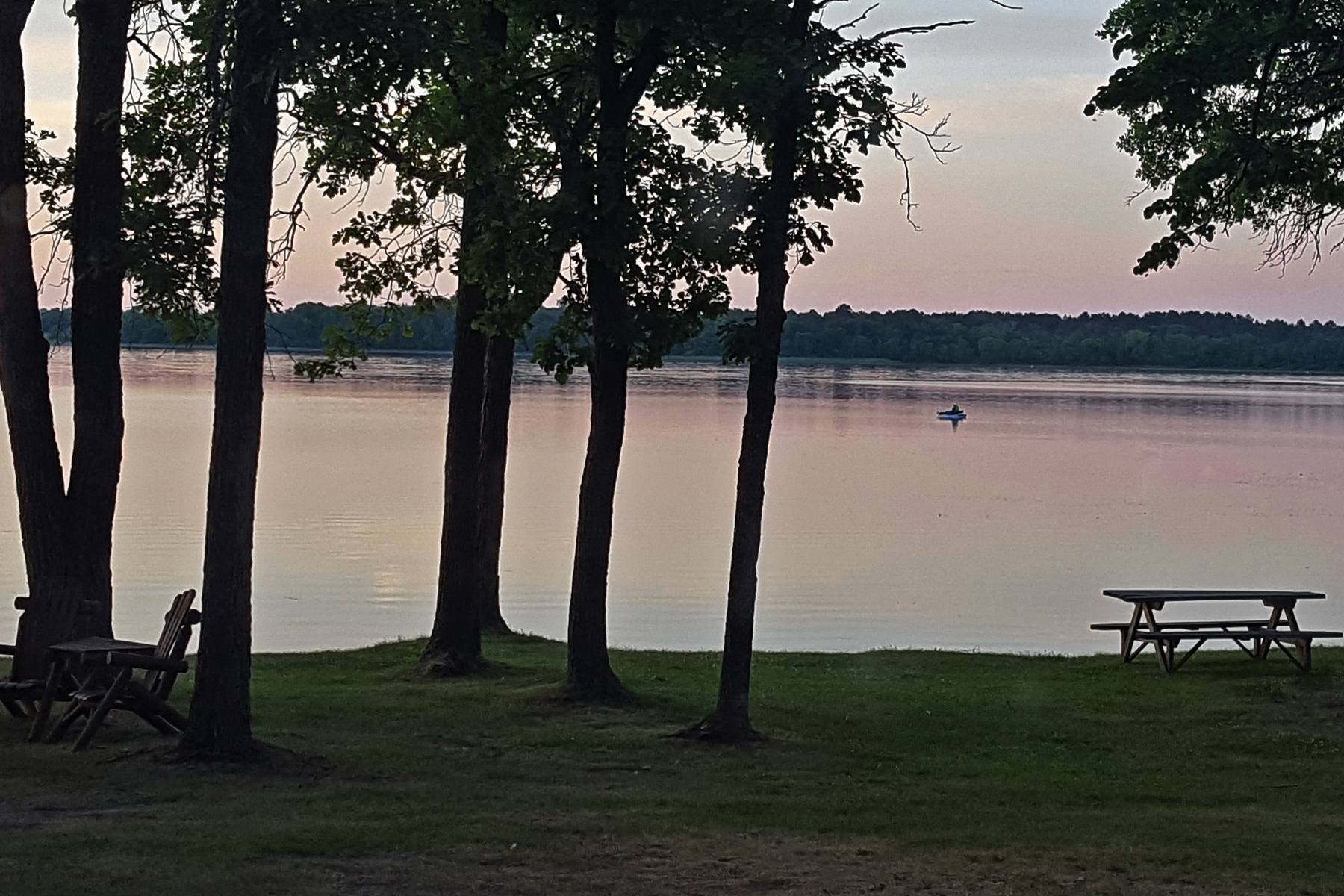I wake at 4:45am to kayak before sunrise. It’s our last morning on Lake Andrusia in northern Minnesota. I love the call of the loons, and rising before dawn means I might savor that sound one last time.
While not quite in my body yet, I manage my clothes, life jacket, and hat. I stumble out the cabin door with one thing in mind, get to the kayak—which is why I don’t see the great blue heron until I startle her into flight.
Stop, Emma, I chide myself. Slow down, match the stillness of the morning, and listen. As I watch the wide, slate blue wingspan lift, I recalibrate my pace to the surrounding stillness.
And at that moment, a loon’s two-toned call rises from the north, answered by the same interval from the east. The sound causes me to inhale a quick breath of delight. Then, I hold and wait.
Meanwhile, a mother duck and seven baby ducklings gently bob along the shoreline. I watch them glide under the dock and continue their morning swim towards the Mississippi River.
When all quiets again, I flip the kayak that’d been resting upside down on the sandy beach. I choose a paddle among those leaning against the boathouse. The kayak scrapes the shallow bottom as I push out into smooth, glassy water.
This hour of pre-dawn holds treasures like no other.
I paddle towards the east where light glows just above the tree line of the far shore. As I float forward, the color intensifies to a deep salmon.
Mid-lake, I pause to look back. To my surprise, the full moon is still visible in the western sky. Thin, translucent clouds cross its orb, creating a misty effect.
The southern sky is pale blue, mostly cloudless. In contrast, the northern sky is cloud-covered.
To the east, the rich salmon glow softens to purple gray. Light cast from the coming sunrise tints surrounding striated clouds a pale pink.
Silence. A fish jumps. Now, the fading purple is gradually replaced by gold.
And still, my heart dares to hope for more loons.
That’s when they call again! Yes, it’s a 1-4, I check with my memory of musical intervals. Then a 1-4-7. Then higher—and laughter, like a kookaburra.
I watch the golden glow build in brilliance until the sun’s rays pierce the horizon, stinging my eyes.
This feels like a sacred initiation.
I pivot the boat 360 degrees, like a camera panning the lake’s full form.
The hum of a small motor heralds the start of the fishing day. My kayak rocks slightly as the wind picks up. A sound vibrates in my right ear, as if my eardrum is fluttering.
In time, I paddle back to shore, changed. This is what I came for—wilderness, beauty, stillness, and silence. Except for the haunting, healing call of the loons.
Photo by Bruce Fuller
If you know one or two people who’d benefit by reading this story,
please do pass it along.
